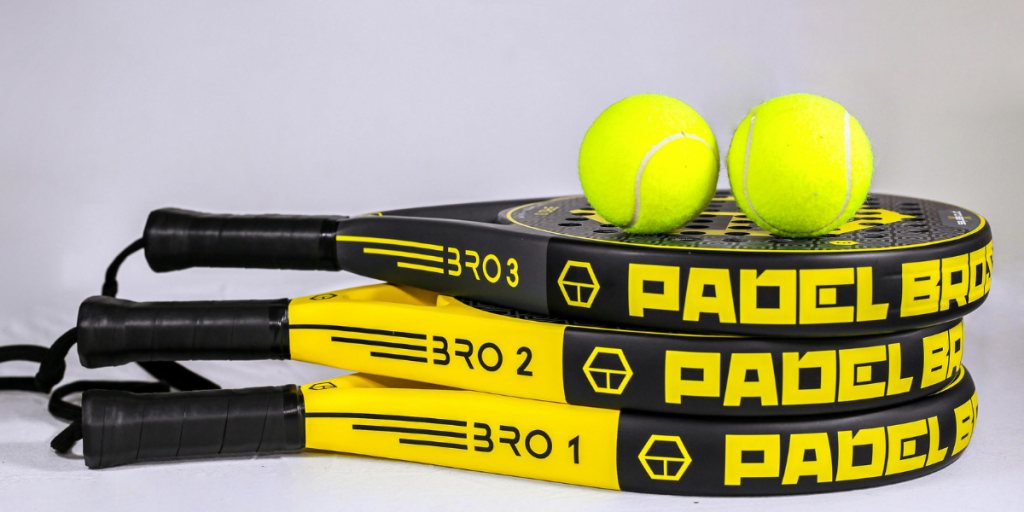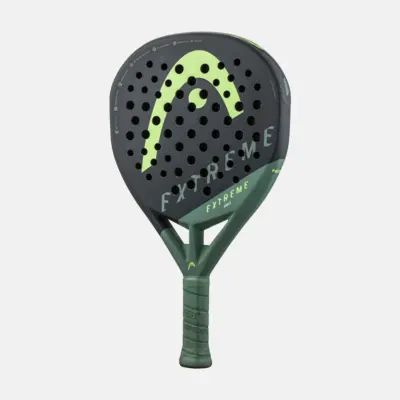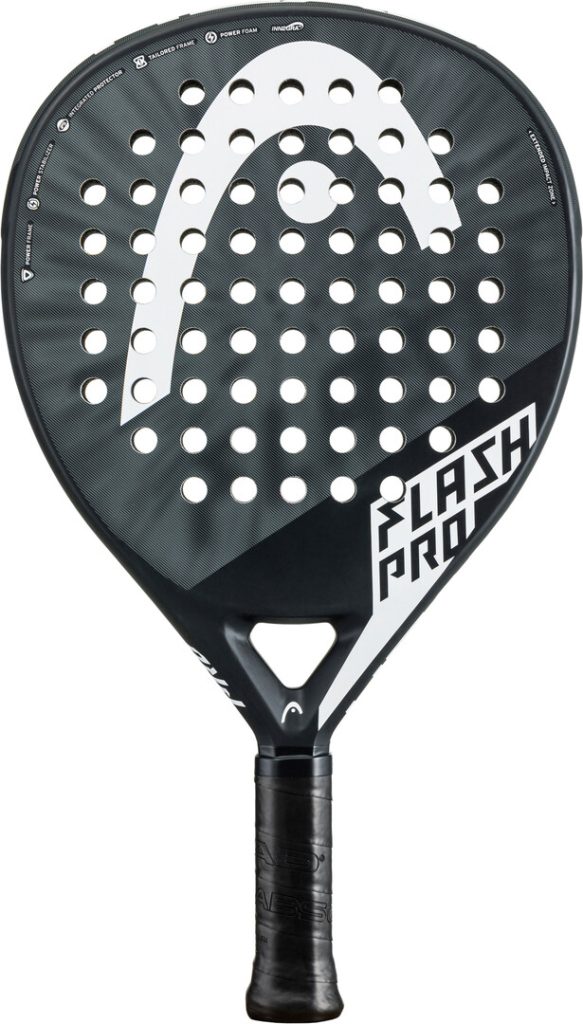
If you are like one of the many padel converts who has fallen in love with padel at some point you will start to covert having your very own padel racket. It seems pretty simple – just jump online and find something you like the look of, that’s in your price range, push a couple of buttons and said padel racket will be winging its way to you in hours thanks to the modern marvel of online shopping. That is a great plan, simple and efficient until you start searching for racquets and are overwhelmed by the immense choice of brands, designs, shapes and colours, and vast price range. Where on earth do you start?
The second sizeable hole in your plan is that whilst to the untrained eye the padel rackets may all look similar with minor variations, these subtle differences in their designs provide very distinctive playing characteristics. This means that each racket may suit your particular skill level, playing preferences and style very differently. Some rackets are designed to be more suitable for players in the early stages of learning padel, assisting you in controlling the placement of your shots while other rackets are designed to assist more advanced players who have already developed a degree of skill.
A beginner who chooses a racket designed for a more advanced player may find it slows down their improvement and progression of their skills as it will be harder to master the basic skills. A skilled player who chooses a racket that is designed more for beginners may find that it limits the development of their game to the next level and frustrates their progress. Specific padel rackets may also assist in helping players remain injury free as they progress through their padel journey which is also another important factor for consideration.
Ok so now we have highlighted all these important factors for you to consider and your head is swimming and you’re wishing you’d just gone onto Amazon and bought that racket you saw which matches your shoes. Well take a deep breath young Padelwan and keep reading because in this 2 part article series we will break all of the padel racket design features down for you and explain the pro’s and con’s of each for your particular game and skill level. By the end of this article you will be a padel racket Jedi well on your way to find and purchase the perfect padel racket.
Different Padel Racket Design Characteristics
Firstly let’s identify the major design characteristics that differentiate padel rackets from each other. These are:
- Padel Racket Shape
- Padel Racket Balance
- Padel Racket Weight
- Rigidity / Construction Material of your Padel Racket
In this article we will examine the shape, balance and weight of a padel racket. However, before we break each of these down, one of the things that sets each padel racket apart from other rackets is the location of their “sweet spot” which is determined by a combination of the above design elements.
Padel Racket Sweet Spot
Hang on what is this “sweet spot” I am referring to? Have we just crossed over into some semi-erotic echelon of padel you didn’t know existed? Well sorry to disappoint you but the answer is no. The sweet spot refers to the part of the racket that will produce the best shot when it comes into contact with the ball. So each time you hit the ball you want that to be the part of the racket that makes contact with the ball to produce the best control and power the racket is capable of or more simply so the ball goes where you’re aiming it for.
The location and size of the sweet spot on the padel racket can vary depending on the design of the particular racket which is an important factor to consider in deciding what type of racket is best for you.
Ok now lets talk about curves.
Padel Racket Shape: It’s all in the Curves
The particular shape of the padel racket dictates a number of the other factors that combine to give a padel racket its particular characteristics so it is one of the most significant aspects to consider when you are choosing a racket. The shape affects the location of the sweet spot and the balance of the racket which both play integral roles it plays.
There are 3 main padel racket shapes:
- Round
- Diamond
- Teardrop

Round Padel Rackets
Round padel rackets are like that reliable friend who’s always there when you need them. They’re forgiving, dependable, and perfect for beginners or players who value control over power.
A round padel racket design produces a sweet spot that lies right in the centre of the racquet and is the largest sweet spot of any of the racquet shapes. This allows the player the best chance of making contact with the ball in the sweet spot of the racquet which is one of the factors that make the round padel racquet the best for controlling your padel shot.
A round padel racket will also have “low balance” which is when the weight of the racket is shifted more toward the handle. This also assists in shot control which allows the player to place the ball where they are aiming to place it more easily and control the power of the shot more easily as well. The balance of these rackets also makes them highly manoeuvrable and often more comfortable to play with for a beginner which in turn reduces strain on the arm and can assist in prevention of injuries for those players just starting out.

Diamond Shaped Padel Rackets

Now, if round padel rackets are the humble, hardworking racket the diamond-shaped rackets are their flashy, power-hungry cousins. These are for the players who don’t just want to win—they want to dominate.
The diamond shaped padel racket has the majority of its weight towards the top of the racket. This means it generates more momentum when you swing it and more power and speed for each shot it produces. While this racket shape provides some impressive performance it also requires significantly more skill to control the power that it produces.
The high balance point means that the sweet spot of this racket is both located higher up the racquet and is also significantly smaller than its round shaped counterpart. So to be able to consistently utilise the benefits this shaped racquet is capable of producing you must be skilful enough to hit the ball using this smaller area on the racket face each time. If you’re unable to do this then this racket can make controlling your shots and power very difficult and produce inconsistent and wildly inaccurate shots This makes this racket shape more suitable for more advanced and skilful players who favour an aggressive style of play.
Teardrop Padel Rackets

If Goldilocks played padel, she’d pick a teardrop-shaped racket—they provide a middle ground on the extremes of power and control that their round and diamond shaped counterparts offer. Teardrop rackets can be thought of as the Swiss Army knives of the padel world: versatile, adaptable, and have something to offer for most situations.
The teardrop shaped racket has a sweet spot slightly higher and smaller than the round shaped padel racket but somewhat lower and bigger than the diamond shaped racquet. This gives the racket a medium balance between the handle and the top of the racket once again in between its two counterparts.
The design of the teardrop shaped racket allows it to generate more momentum when you swing it than the round racket so it will generate more power in its shots. However, it also affords you more control over your shot than the diamond shaped racket as the larger sweet spot allows you a bigger area on the face of the racket to hit to send the ball exactly where you want it to go. The weight of these padel rackets being more centralised requires more strength to wield than the round shaped rackets but make them more manoeuvrable than their diamond shaped counterparts.
The teardrop shaped racket may offer a great combination of control and power and seem like a no brainer, where’s the downside? Well like the Swiss Army Knife analogy we used earlier it does offer a little bit of everything but it is not the master of either control or power. So a teardrop racket may still be difficult to use for the beginner until they have developed a degree of skill that allows them to find the smaller sweet spot consistently. Alternatively as your padel skill develops the teardrop racket may not provide the power you seek to suit your ever developing game.
These factors make this racket suitable for players of an intermediate level who have already developed a level of control over their shots and are looking at being able to generate slightly more power. It offers excellent versatility in helping players transition and develop their padel game as they improve their skills.
Padel Racket Shape Balance and Weight
So there you have it you’re now well versed to weigh up the pros and cons of the padel racket design and suit them to your skill level and playing style to help you narrow down the vast array of padel rackets that are available. But before you go and make that racket selection in the second article in this series “What is the Best Material for Your Padel Racket to be Made From: Getting to the Core of it”, we will delve into another major area for consideration before you finalise your racket choice – the materials that your chosen racket is made from. There are a number of schools of thought out there who consider this to be the singularly most important factor to consider when choosing and buying your padel racket. So in our next article we will do a deep dive examining the different materials that make up the core and frame of a padel racket and which of these are the most suitable for you. The third and final article in this series is “What Are the Best Padel Racket Frame and Face Materials”. This article as the title suggests explores the impact of the racket frame and face when it comes to how the racket performs and its pros and cons. Once you’ve read all three you get your Junior Ranger Padel Racket Badge and you’ll have all the necessary information to help you choose and buy the best padel racket to level your game up. For more information, reviews and comparisons, and buying guides on Padel Rackets check out all our articles here.
